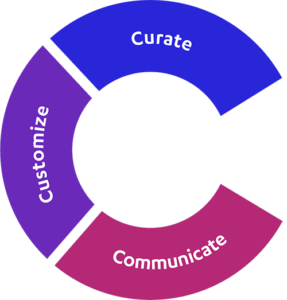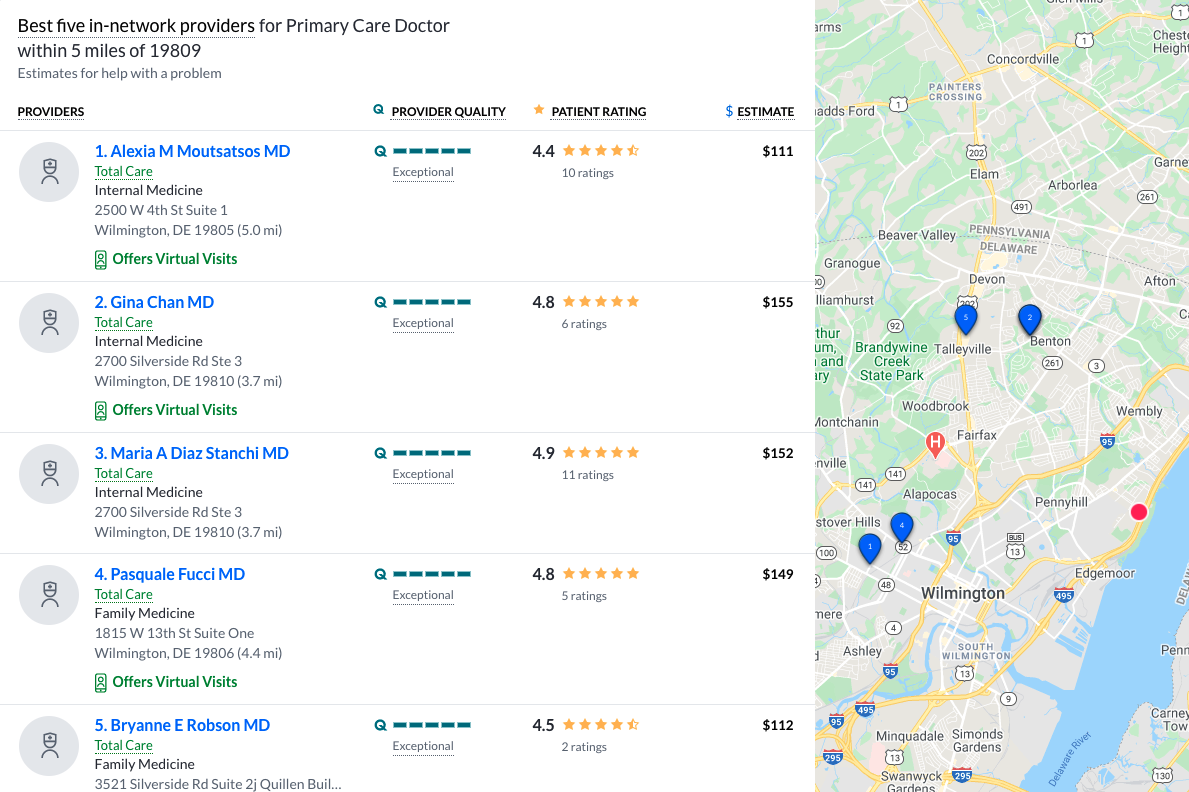The quality of care an individual receives is incredibly important, as choosing a high-quality provider can lead to better health outcomes and a reduction in annual healthcare spend.
The results of low-quality care are, unsurprisingly, not good. Each year in the U.S., medical errors lead to more than 250,000 deaths, making it the fourth leading cause of death after heart disease, cancer, and COVID-19 (as of 2020). In addition, approximately $210 billion is spent on unnecessary care in the U.S. each year.
It’s clear that quality is critical. But, currently, there’s no universally-accepted solution that ensures every individual receives high-quality care — care that’s necessary, appropriate, and clinically validated. And patients aren’t purposely choosing low-quality care. Rather, they commonly face the following three barriers when trying to determine provider quality:
- They lack easy access to provider quality information, leading them to rely on sources like Yelp, NextDoor, and word-of-mouth recommendations. These types of reviews are subjective and tend to be more of a reflection on the patient’s experience with office staff and physician bedside manner than a true testament to quality of care.
- They have difficulty knowing which quality metrics matter most for their unique circumstances, meaning they may choose a doctor who’s great overall but doesn’t know how to treat their specific clinical situation.
- They struggle to interpret quality information alongside competing concerns like plan coverage and out-of-pocket costs and ultimately end up relying on price and convenience to decide on a provider.
How Castlight Has Been Solving the Provider Quality Problem for More Than a Decade
With Castlight’s health navigation platform, members can easily search for and connect with high-quality, in-network physicians who have a history of achieving the best possible clinical outcomes. To assess a provider’s quality, we employ a three-step approach:

- We curate extensive data on provider performance from more than 30 reputable and reliable sources, ensuring these data sets include industry-standard metrics, such as risk adjustment and sample size requirements. Castlight data scientists map quality ratings to individual providers and facilities in Castlight’s best-in-class Unified Provider Directory, which serves as a source of truth for provider information across the U.S.
- We customize data based on member details and match members with providers whose skills best suit the member’s clinical needs and individual preferences. In addition, to ensure member navigation to the most appropriate sites of care, Castlight has the ability to deeply integrate employer and health plan narrow and tiered networks, centers of excellence, on-site and near-site clinics, and virtual care options
- We clearly communicate quality and cost information to members, including details on why the provider received a given quality rating. The information displayed to the member is the result of a decade of user testing and research and provides the right level of detail — such as in-network status and cost efficiency — to better enable the member to makean informed decision about their care.
These three steps are at the foundation of enabling member navigation to high-value care using Castlight’s proprietary provider search tools.
Recently, we put together a report diving into exactly how Castlight’s approach helps individuals overcome the three barriers consumers typically face when trying to identify high-quality providers. Before delving into what we discovered, though, it’s important to understand Castlight’s Q-Score.
What is the Castlight Q-Score?
In short, this is Castlight’s version of a quality rating, which we provide for 94% of physicians, 93% of acute care hospitals, and more than 100 procedures and specialties across the U.S. In order to assign a quality rating to each provider, we gather and organize data from multiple robust, third-party, and internally-derived clinical metrics. Q-Scores are updated monthly to incorporate the latest outcomes data.
When a Castlight member logs into their portal and searches for a provider, they’re able to see a user-friendly rating for their providers, which is a translation of the numerical Q-Score. This rating could be: Exceptional, Great, Good, Unconfirmed, or Contested. In addition, the results members see take into account their unique patient profile and preferences.
Though members can explore the Castlight interface to learn more about any provider in our system, when they search for a specific type of care, the information display first shows them their top five recommended doctors. This ranking is based primarily on Q-Score but also factors in network status, provider cost, and member preferences.
(Download the report to learn more about the Q-Score.)

Three Key Findings from Castlight’s Quality Report
After subjecting our three-step quality approach to rigorous evaluation, we found that members who use Castlight search tools to find a provider experience the following three outcomes:
1. Castlight Users Are More Likely Than Non-Castlight Users to Choose High-Quality Providers
Registered Castlight members who use Castlight’s platform to search for a doctor end up seeing providers of exceptional or above average quality more so than non-registered members who find providers without using Castlight. For example, 24.5% of members who used Castlight tools to find their Primary Care Provider (PCP) received care with a physician rated Exceptional, whereas only 6.7% of members who did not use Castlight to find their PCP received care from an “Exceptional” provider. Ultimately, our analysis clearly indicates that members who use the Castlight platform to find their provider will connect with higher quality providers who deliver the best clinical outcomes.
2. Higher PCP Q-Scores Correlate with More Preventive Care
Castlight members who visit PCPs with higher Q-Score ratings receive more preventive care than those who see a PCP who has a lower Q-Score. Preventive care screenings — such as mammograms, skin cancer screenings, and colonoscopies — are critical when it comes to achieving and maintaining a good health status and reducing healthcare spend. With the steep decrease in preventive care utilization due to COVID-19, reconnecting to primary care is more important than ever.
3. Higher PCP Q-Scores Correlate with Fewer Inpatient Days and Lower Cost of Care
Choosing a primary care doctor with a Q-Score indicating high-quality care led to 15% fewer inpatient days per year and 8% lower total medical spend than expected (according to predicted outcomes based on patients’ risk cohort). Helping Castlight members find PCPs who have a record of achieving the best possible clinical outcomes and who align with the member’s clinical profile and personal preferences is critical when it comes to achieving better health outcomes and controlling costly downstream care.
Castlight’s approach to quality is based on the idea that guiding consumers towards high-quality care requires a multi-pronged approach beginning with rigorous data collection and ending with members choosing one of their top recommended providers, and our research has validated this approach since 2010.
To learn more about Castlight’s approach to quality, including the comprehensive ins and outs of the Q-Score and the research methods we used for each finding, download the white paper.


